
In recent times, superstar Bollywood actor Amitabh Bachhan has been promoting the Great Rann of Kutch as a tourist destination with the central pitch of months long mela – Rann Utsav organized in the salt desert by Gujrat Tourism. The festival, a business opportunity for local ethnic groups undercuts complex enthralling experiences of this region, which like any other in India remains a mystifying rubric cube. Kutch is a statement of human grit, shared memory of disasters, and the mental space is balanced by victories of defiance in this mutating land. This article attempts to bring out the multilayered idea of the Great Rann of Kutch.
The following passage is from a short story that communicates the starkness of the environmental surroundings— “THE DROUGHT in Kutch had lasted for three successive years. Even when clouds were sighted they passed by, ignoring the stricken country. The monsoons had, so to speak, forgotten to land. The Rann lay like a paralyzed monster, it’s back covered with scab and scar-tissue and dried blister-skin. The earth had cracked and it looked as if chunks of it had been baked in a kiln and then embedded in the soil-crust. The cattle became thin and emaciated. The oxen died. The camel alone survived comfortably, feeding on the bawal, camelthorn. Then one day the clouds rolled in like wineskins and the lightning crackled and the wineskins burst. Though two years have passed since the drought ended, everyone remembers that it first rained on the day when Fatimah entered the village. This is how she came….” – Keki Daruwalla – Love across the Salt Desert….
The Great Rann (wasteland) of Kutch lies west of the Indian Subcontinent in the state of Gujarat, and stretches into Pakistan. It is the land between the Gulf of Kutch and the mouth of River Indus in Pakistan and is a border area with Pakistan. It is a Museum of Environmental hardship and an area defined by the challenging scarcity of water. It is a landscape fraught with human and natural upheavals and disasters- earthquakes, famines, plague, history of smuggling, conflict between warlords, plague, on so on and so forth. It is a land where potent community memories are defined by actions expressing resistive human spirit and celebration of live by inventive traditionally skilled people.

Figure 1Banni

The Salt Desert
The Great Rann of Kutch comprises of more than 5 ecological zones that includes the Rann or salt marshland, Banni or Asia’s largest grassland, irrigated fields in some areas, and among other zones the Arabian Sea. Scarcity of water and saline land have dominated the manner in which social communities, traditional knowledge networks and communities organize themselves. There are living in this a large number of social ethnic groups each having their own distinct visual identity, customs, language and cultural traditional skills. 
The story of Kutch is about herders, textile experts, boat-builders, of festivities, musicians and potters. It is a story of daring, celebration of human spirit manifested in the vibrancy of clothes and décor of their homes. The Great Rann of Kutch was under the Jadeja Rajputs a part of Princely India until independence, after which it became a part of the Indian Union. Known as the Raja of Bhuj, the rulers built two palaces one in Bhuj and the other in Manadvi the coastal town.
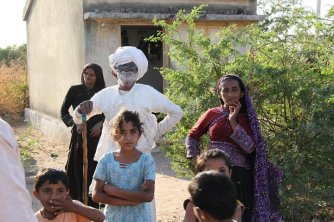
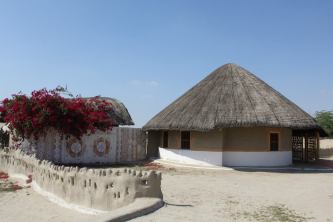
Fig4-5 : Rabari people and traditional homes called Bunga
Kutch is where man asserts his place in the center of a wasteland in the most heroic manner, and where the awe of nature relegates big Gods to the margins giving place to local cults and beliefs and to syncretic energies of living cultures. And it is ironical, that, Kutch remains a part of Gujarat, where in 2002 there was a horrific genocide based on communal Hindu Muslim divide.
Bhuj
The journey begins in Bhuj, the capital of the district which was the epicenter of the 2001 earthquake that destroyed the entire town and of which even now one can see the rubble in the fringes of the town. The significant built heritage in the town are two palaces in one complex of the Maharaja of Bhuj. There is the old palace of which one remaining part Aina Mahal (palace of glass and mirrors) is converted into a small but beautiful museum hosting a range of wonderful embroidery, glass paintings, and other quaint artefacts. The other palace is the neglected mid 19thc Italian Gothic castle called the Prag Mahal.


Fig 6-7: Old Palace- Bhuj and Museum – Aina Mahal


Fig 8-9 : Aari Embroidery in Bhuj Museum & Prag Mahal in Bhuj
Traditionally Skilled INDIA
Journey in Kutch is incomplete without experiencing the display and fascinating processes of traditional skills by large number of social groups. It is these skills which have for centuries provided sustainability to large number of people. But most of all, the Kutchis are remarkable in the manner they have re-positioned their traditional knowledge skills for new markets.
There are in Bhuj and other parts of Kutch, for example the Kathri Muslim caste community who are textile specialists engaged in block-printing-dying, art of tie and dye, and Rogan cloth painters; then there are loharus or metal workers engaged in all kind of metal work life making of knives, nutcrackers, scissors wonderful silver work ( silver of Kutch that is known not to blacken), loharus are also boat builders, and coppersmiths. Among all artisans Women plays an eminent role as partners in craft processes, but most of all as independent embroiderers which they even trade. The manner in which these artisans have re-positioned their art, design and entrepreneurial skills is an emphatic statement of the strength and depth of traditional knowledge education and tenacity of skills.
Each artisan community has their own stories. For example, the block printers of Bhuj have been resettled in a small neighborhood called Ajrakhpur in Bhuj. The neighborhood is named after the specific block printing technique called Ajrakh. Several members of this community are perceived not to be formally educated and yet they have ironically been awarded honorary degrees from various well known foreign universities. Members both young and old rattle chemical formulas and processes such that one is in awe while comparing their oral and experiential knowledge on chemistry with teachers in schools. Their sense of design and product development is one which draws great respect, so much that students and teachers from renowned textile schools around the world come to learn from them, finally their business sense can beat many who have business management degrees. These traditionally skilled communities form the intangible heritage of India.
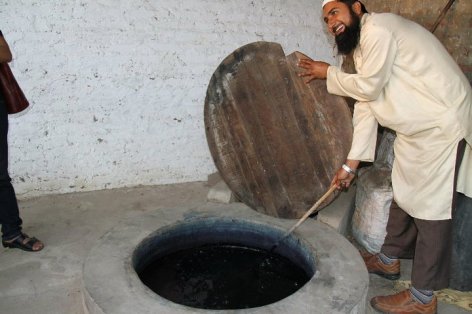 Sufiyan Kharti making Indigo
Sufiyan Kharti making Indigo
 Ajrakh Block Print
Ajrakh Block Print
 Metal workers of Bhuj
Metal workers of Bhuj
While in Bhuj, a visit to the fascinating Danda bazaar is a hypnotical experience to the senses with shops selling traditional things, and variety of ethnic groups from remote villages in the dry grassland Banni moving around shopping including glimpses of the mysterious Rabaris.

 Danda Bazar, & Rabari Woman
Danda Bazar, & Rabari Woman
Mandavi – the Coastal Town

Fig- Almost like a Noah’s Ark, the boat building in Mandavi
Fifty six kilometers from Bhuj, life in the town of Mandavi is marked by the coming and going of tide in the Arabian Sea, and the presence of the Rukmavati River. An ancient port, the present city was laid out by the Jadeja Rajpiuts in the 16thc. The royal patrons successfully organized a shipping and trade industry which comprised of elaborate dockyards and ship building activities which even now remain in the hands of the traditionally skilled community the metal workers – Loharus. The earlier days ships brought in dates, grains, Rhinoceros horns, ivory and other goods. The town hosts a disrupted, fortified wall, and was and remains a vibrant trading port connected to the Africa, Emirates and other parts of West Asia. According to the records, the ivory tusks were so big that they got jammed in the walls, balconies and windows of houses in the lanes of Mandavi. Evidence of contact with Africa is seen in the Siddhis or the African looking Kutchi speaking the local language serving tea to sailors, boat builders.
The edge of the town is marked by old shipyards, boat building activities and junked vessels. Across the river is a quaint neighborhood called Salaiya which houses colorful homes of fishing communities, boat builders, sailors, mosques and Sufi shrines. The energies of Madavi is marked by sailors, boat builders and merchants. The heritage of boat building is riveting and is captured in narratives of traditional boat builders like Ibrahim Mistry. For example, he explains the manner in which the wood selected for building a boat is almost given a human form, and deified then he describes rituals associated with consecrating the building process, customs associated with the completion of the boat and first sailing of a boat. These include the Sufi narratives that reach out to protect sailors on open sea from nature’s fury and pirates. It is a world of its own.

Our Group, the African Siddhi Kutchi and Ismail Mistry
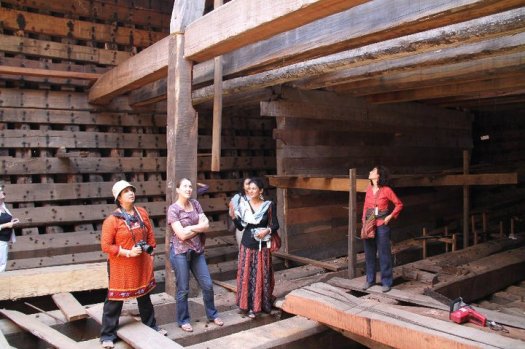
Inside the Unbuilt Boat
The Vijay Vilas palace in Mandavi, has a rolling business of lending the venue for Bollywood shoots. So, the fairylike summer palace of the Raja of Bhuj with its picturesque setting overlooking the Arabian Sea in Mandavi has played host to Bollywood songs which now forms the new heritage of this built heritage. Alongside, the Maharaja and local businessmen have invested in Wind farms.

Banni – One of Asia’s largest dry grasslands, Banni is punctuated with far flung villages.
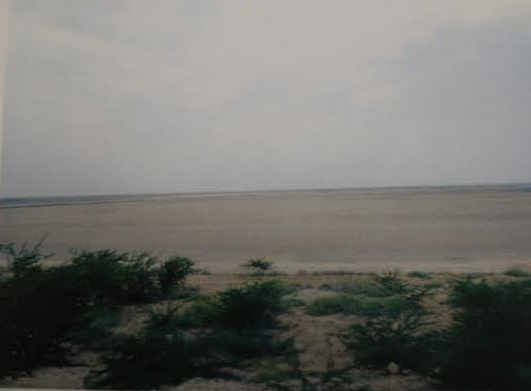

Fig 1– Banni Grassland bordering the Rann- Salt Desert; Fig2: Salt in Banni
As one drives the narrow, yet well tarred border road in this semi desert territory, visit to villages is characterized by surprises. For example, in Hudko village dominated by Harijans who specialize in leather goods and embroidery, run and maintain a resort and restaurant funded by UNDP.


Visit to any Banni village comprises of interaction with artisan business women who self-organized skilled entrepreneurs lay out their embroidery and other crafts in a delightful manner. Savvy, rustic yet restrained they convince you to invest in their embroidered cloth and other artefacts. There are skilled communities who display mastery in woodwork, lacquer work, pottery. The pottery of is distinct since it displays continuity with the pottery found in the Indus Valley Civilization of which the site of Dhola Vira is near the Great Rann.


The pottery on the left is originally from Indus Valley civilization & right one is by a living potter in Banni
Comprehending traditional skills in Banni is incomplete without not visiting the craft village of Nirona where there is a loharu family specializing in Copper bells The products comprises of musical bells, cattle bells, Angels for Christmas trees, wind chimes and much more. The bell man has a wonderful smile that lights the world, he sits on the floor, and as part of marketing immediately gives a lecture demonstration and whoops! A bell is made within ten minutes. You can also get hot barley bread made by the women of the house who participate the process of making the bells as well.
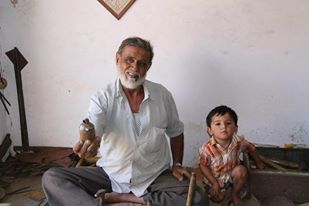

Copper bell maker in Nirona
The other unusual arts in Nirona are that of Lacquer and Rogan painting. The lacquer although extremely refined in the hands of the local artisans, is one where the community is poor, and inbreeding has led to substantial deformity among them. It also seems the most unorganized of the artisan communities in this craft village and they live on the fringes of the village.

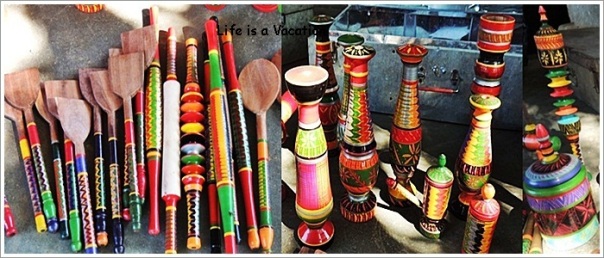
Figure 14 Lacquer workers in Village Nirona
Nirona boasts of the art of Rogan (Oil) painting done by the Muslim Katri community. It is a skill which can be appreciated only if one understands the process. Mr. Modi presented President Obama pieces of Rogan painted textiles when he visited India a few years ago. This YouTube will be self-explanatory https://www.youtube.com/watch?v=x-M7-_YBp2o
Among the several ethnic communities in Banni the Mutwas in village Dhorodo are fascinating. Dhorodo the last village before the expansive salt desert starts is the home to the proud tribe Mutwa whose oral history says that about 500 years ago a Eunuch led this group of people from Arabia into Sindh and across the salt desert to Kutch. Itinerant and Bedouin beliefs characterized this tribe which now has presented itself as one steeped in Islamic conservative beliefs so as to appropriate a sense of social upward mobility. Led by Gulbeg a formidable leader their main power came from their inherent understanding of the topography and geopolitically important vast salt desert which is shared between India and Pakistan. Like the shepherds in Kashmir, Gulbeg was closely associated with the intelligence network of the Indian State and gained great support of the state. However, Gulbeg was able to create a unique discipline in his community which ensured preservation of rituals, beliefs and arts (mud painting, Sufi music, embroidery) and herding. His granddaughter Sofia is unique in that she has learned on her own to speak English, is entrepreneurial and works with large number of International textile experts on various documents on Embroidery. No lady in this community is to be photographed.


Mutwas of Dhroodo Village – Left – Gulbeg and other members of the clan


Mehmood Mutwa known for his Mud -Mirror wall craft, His wife Hoorbai won the President Award for embroidery.
The Rann- (Wasteland- The Main Salted Marshland)

Travel to Kutch is not complete with a visit to the Rann (Wasteland) salted marshland stretching from India into Pakistan. It’s location near the sea and low-lying areas by which marine water enters into the vast expanse has led to an admixture of saline, marshy and coastal desert where water and soils are extremely saline. This character has created a rich canvas of unique forms of desert flora and fauna biodiversity which has great natural heritage conservation significance. Salt-impregnated its wilderness value and appears like a tabletop surface, interspersed with small uplands (islands) locally called beyts or Dhoi. These beyts care the only landmark and perceptive eyes of tribal communities like the Mutwas have created their own mapping of the wilderness. The Rann and Banni grassland present micro-environmental conditions which are ideal for nesting and breeding ground for Flamingoes and other migratory birds who feed on algae available in the saline marshy ecosystem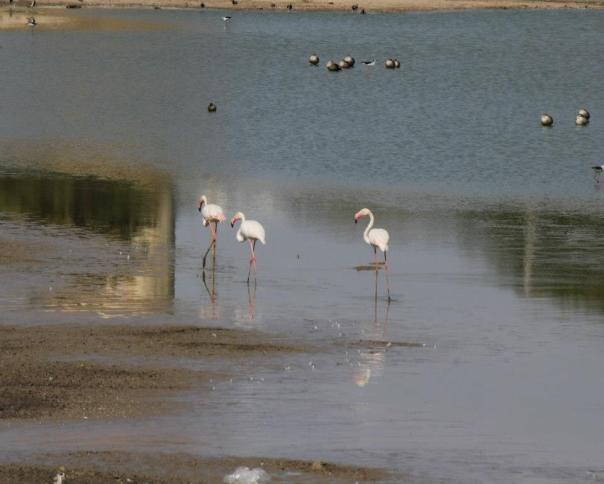
Sustaining Energies – The Smaller Gods: for Kutchis folk saints remain more important than mainstream religious institutional practices. A major reason for this has been the dynamic infusion of cultures where itinerant communities moved on sea and land. There has been constant fusing and metamorphosing of ideas and identities. Kutchis acquire strength from local regional heroes who are connected to their everyday lives and to their land. These local cults and spiritual persons are more to the Kutchis than the higher Gods, it is these local deified heroes who come to their rescue in times of trouble. Kutchis realize that their egos are contained in face of the mighty natural forces. When sudden calamities come, neither do petty divisive community politics nor artificial divides on bases of caste, class, or religion come to their rescue. As an example, there is the Sufi shrine called Haji pir, the Sufi saint who protects cattle of thousands of pastoral herdsmen, and when the annual fair to mark the death anniversary (Urs) of the Sufi is observed, people from all walks of life, ethnic groups, religions travel from far and near, in the different modes of transport, even walking in the night to avoid the heat of the day come to participate which transcends any social distinction. The Kutchis while retaining their individual community identities with great pride, have mastered the art of living with their wider human and natural ecosystems.

Festivities in Haji Pir
The Shrine – Math of Dinodhar & Cult of Kaan phata (ascetics with torn ears)
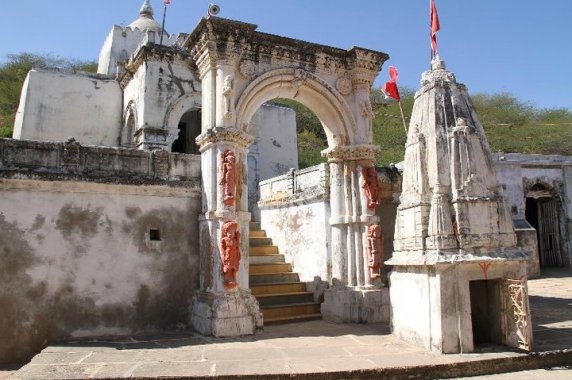
Dhoramnath an ascetic destroyed Ryan or Mandavi only to later repent by practicing headstand on a hill. However, the hill started collapsing weighed down by his sin, he then went to a second hill which too went down. Dhoramnath then climbed backwards on a third hill which was able to bear his weight, and this hill came to be known as Dhinodhar or the patient one. For 12 years, Dhoramnath meditated standing on his head, and a woman of the nearby village fed him during his meditative penance. His severe penance frightened the Gods for fear that Dhoramnath will become too powerful, they thus requested the ascetic to stop meditation. Empowered Dhoramnath said to the Gods, that when he stopped whichever spot he would look would become barren, the Gods thus asked him to look at the sea, and that is how the Rann of Kutch was formed, Dhoramnath fearing the death of creatures of the sea, shifted his eyes and gazed at the hill which split into two, he then came down the hill lighted a ritual fire, built a monastery and established the sect of ascetics with split ears, Kan patha. These ascetics are in service of the poor. There is a facility of a guest house in the monastery.


The Kaan phata – ascetic with torn ear
The monastery and its head were patronized by the Maharaja of Kutch. The head priest was a powerful person, and an elaborate but dilapidated upper storey of his seat and living space is still there in the monastery. The monastery is characterized by the local architecture of balconies, and even paintings.


Conclusion:
The journey in Kutch, is never ending, conversations with ethnic groups, herders, stories under stones festivities humbles an individual that there is in this territory the embedded memory of so much time and space between the Indus Valley civilization to the present. The spirit of people their smiles, warmth, and vibrant clothing defiantly located the Kutchis on the center of the this wild wilderness. Yes, Kutch is much, much more that the Rann Utsav…